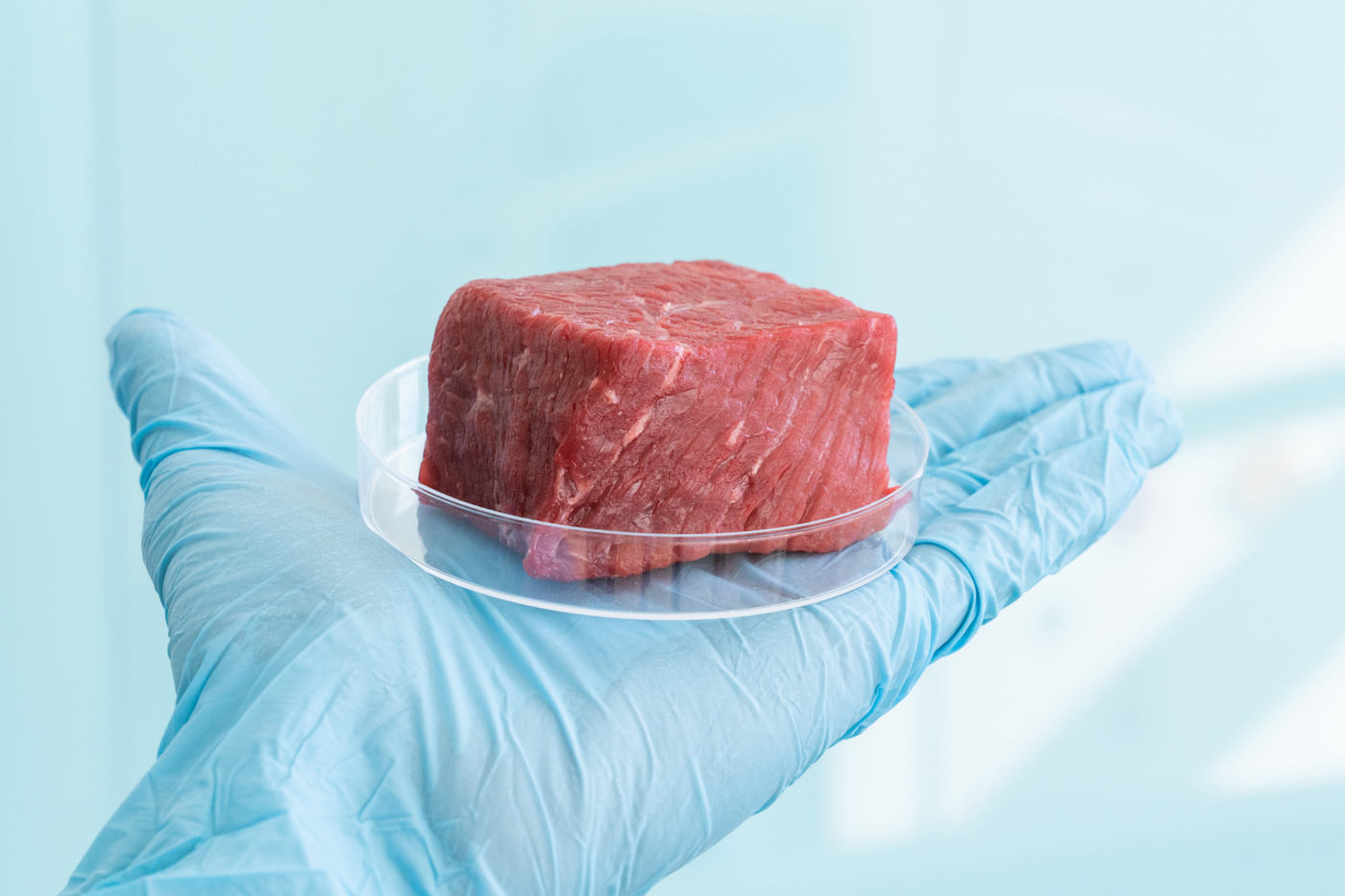It goes by many names—cultured, cultivated, clean and cruelty-free, to name just some. But whatever it’s called, lab-grown meat has certainly piqued the curiosity of investors. Driving the spike in their interest: In June, the U.S. Department of Agriculture (USDA) gave two companies clearance to sell chicken created by science to stores and restaurants in the U.S.
With the FDA also on board, the firms in question, Good Meat and Upside Foods, are ramping up production.
Not a moment too soon, say environmentalists. Traditional meat sources account for nearly 60 percent of the greenhouse gases caused by food production, while also contributing big time to deforestation and water scarcity.
By contrast, sustainably cultured meat could have a carbon footprint of 92 percent lower than beef, 17 percent lower than chicken, and 52 percent lower than pork. Meanwhile, animal welfare activists are hailing lab meat breakthroughs for their potential to bring an end to abattoirs and inhumane conditions in sties and pens.
A quick primer on lab protein
Before we go further, let’s dispel visions of frankenbeef with a highly simplified introduction to cultured meat. Essentially, scientists in food factories feed and grow cell samples from, say, pigs and cows, until the cells turn into a version of the pork or burger meat we’re familiar with. Thumbs up from the nation’s regulatory boards means the resulting food has been deemed ready for human consumption. But these bodies will continue to watch outcomes carefully.
The race to the meat market
So what does this mean for investors? Heightened anticipation. The consulting firm McKinsey, for one, has declared that the cell-based meat industry could generate $30 billion by 2030. And other experts in the field say some 60 percent of all meat could be created in the lab by 2040. Accordingly, nearly 100 startups have entered the industry in 2020, compared to just four in 2016—and these newcomers have attracted more than $1.2 billion from enthusiasts and celebrities like Leonardo DiCaprio. For their part, another 40 firms are gearing up to supply the support and tools these enterprises need to bring their goods to market.
Acknowledging the risks
All the same, some observers are cautious. For one thing, growing meat in a factory is expensive. The first lab-grown burger, produced in 2013, cost over $300,000 to create—not exactly McDonald’s prices. Since then, McKinsey says production costs have dropped by 99 percent but prices may still be out of reach for the average consumer for quite some time. Another big question: Will people be willing to gobble up beef and chicken produced in a lab, confident that it’s safe to do so?
Breaking into the club
Provisos aside, though, excitement over the promise of sustainable beef remains high. But unless you’ve got special status as an accredited investor or have an appetite for over-the-counter stocks, it can be hard to break into this new market. Even agricultural giant Cargill Foods, which has put lots of money into cultivated meat, is private.
At present, just one standalone company in the field is listed on the Nasdaq: Steakholder Foods (STKH), an Israeli enterprise that uses 3D printing technology in its production of cultivated meat. The stock has been up and down but the company just inked a multi-million-dollar deal to build a huge facility in the Persian Gulf.
Then there’s Cult Food Science Corp. (CULTF), based out of Vancouver, Canada. The first publicly-traded cultivated meat company in North America, it’s currently listed on the Toronto and Frankfurt Stock Exchanges.
There’s talk, too, of Upside Foods going public, but no IPO date has been set so far.
Generally, though, the startups are closely held. Among the many notables are Prolific Machines, Bond Pet Foods and Momentum Foods. The latter enterprise has a novel approach, combining lab-grown meat with plant-based products. Another private contender with an interesting take on cultivated beef is South Korea’s TissenBioFarm. It claims to have a unique method for producing whole-cut meat, rather than ground or minced fare.
Where to hitch your wagon
The point here: At present, the best tactic for those looking to get into the game early may well be to buy stocks in a big-name player like Tyson Foods (TSN). Through its investment arm Tyson Ventures, the Arkansas conglomerate has been digging into its deep pockets to help fund Memphis Meats and Future Meat Technologies, two firms at the starting gate.
And if the Brazilian-based enterprise JBS makes good on its bid to go public, that could be worth following up. JBS has a 51 percent stake in the Spanish firm BioTech and is completing a factory there in 2024 that could start by producing 1,000 metric tons of beef annually.
But the bigger message is this: Thought leaders like Bill Gates believe all the meat produced by wealthy nations should come from the lab if we want to put a big dent in climate change. And if investors can make money in the process, so much the better.
Image and article originally from www.nasdaq.com. Read the original article here.

